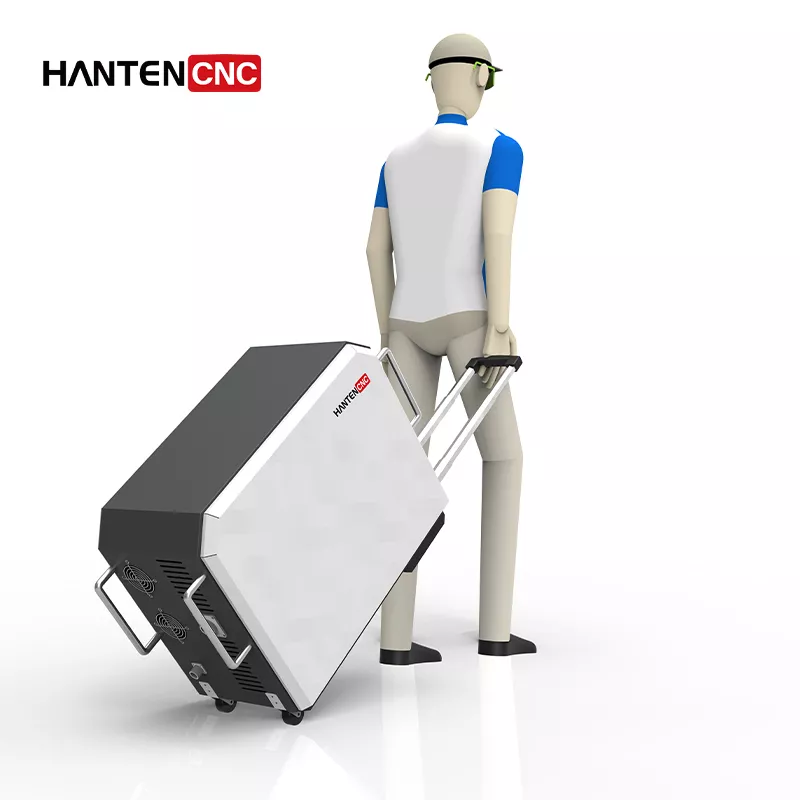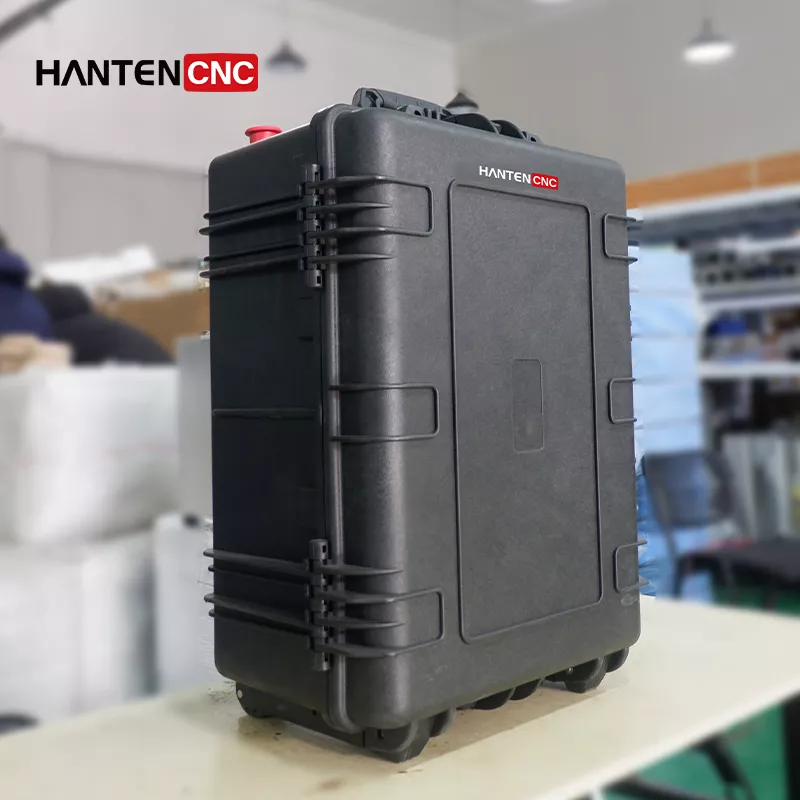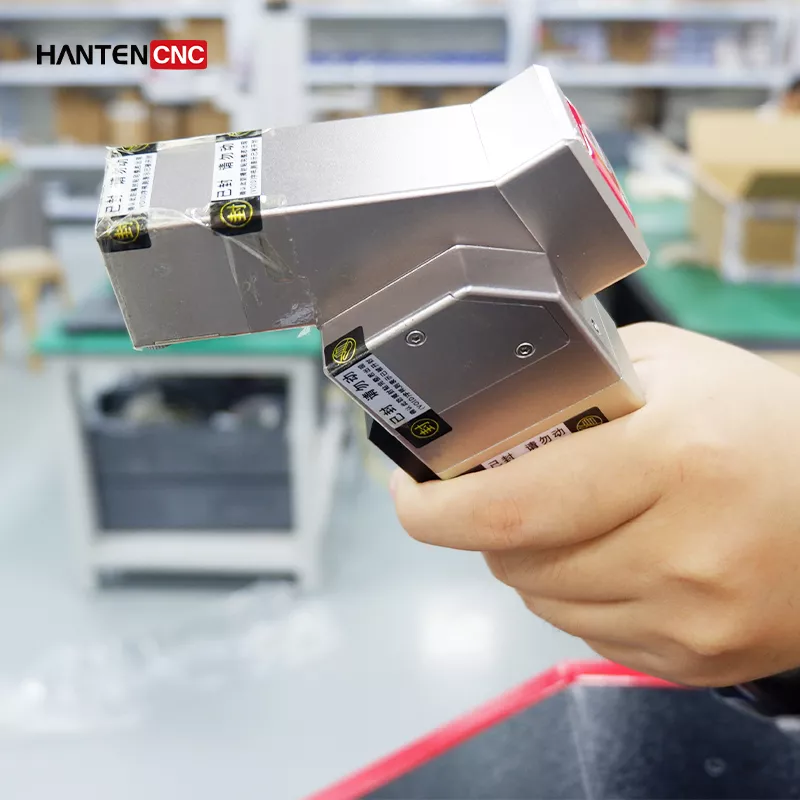Laser cleaning is the process of removing contaminants from a material’s surface. Also, laser surface cleaning involves using laser irradiation to eliminate impurities. During this process, the dirt particles change to gas or get off the surface. Therefore, if you are looking for targeted cleaning of your workpiece, then laser cleaning is what you should go for.
What is Laser Cleaning?
A laser cleaner lets you decontaminate a surface with rust, resin, stain, dirt, paint, coating, oxide layer, grease, or galvanization. Laser cleaning is widely used in factory workshops like automobile manufacturing companies.
Unlike traditional surface cleaning methods, laser cleaning is efficient and cost-effective. Traditional cleaning is labor-intensive and time-consuming. Additionally, they don’t leave the material surface entirely clean.
How Does Laser Cleaning Work?
The laser cleaning machine uses a material surface, device, and vacuum. A laser cleaner ejects a specific wavelength of light toward the material’s surface. The interaction between the laser light and contaminants ablates the material’s top layer. Thus leaving the surface of the material clean.
The dirt particles can be collected using a filtration system like a vacuum cleaner. Furthermore, the removal process is repeated to ensure the complete removal of the contaminants and to achieve the required thickness.
So, here are the steps on how laser cleaning works.
Step 1: Turning on the Laser Cleaner
Start by turning on the laser cleaning machine. Additionally, ensure that the material that is supposed to be cleaned is in the working area.
Step 2: Point the Laser Light to the Surface
Now, start shooting infrared light generated by the laser to the surface that contains oxides, rust, grime, or carbon.
Step 3: Absorption of the Light Energy
While shooting at the contaminated metal surface, the impurities absorb the light energy from the laser. The contaminant heats up and gets off the surface. During this time, the substratum remains cool. It makes the impurity shrink off the surface quickly. This is due to the difference in temperature between the contaminant and the substrate.
Step 4: Vacuum the Substratum
Using a filtration system like a vacuum cleaner removes the contaminants from the material’s surface. It ensures the surface is clean, free from impurities, and ready for use.
What to Do During Laser Cleaning Process
For safety purposes, workers should wear safety eyeglasses. Additionally, the cleaning process should be conducted in a hazard room. It prevents radiation exposure by other workers, which can lead to health conditions.
The Benefits of Laser Cleaning
Laser surface cleaning is a new technology being embraced by different companies worldwide. Therefore, this section explains why laser cleaning is the preferred industrial method.
1. Environmentally Friendly
The use of laser cleaning is environmentally friendly.
Compared to chemical etching, ice blasting, or sandblasting, laser surface cleaning doesn’t require using a chemical that is harmful to the environment. Additionally, this cleaning method doesn’t require sand mining, which destroys the ecosystem. Lastly, laser cleaning does not generate lots of waste that needs dumping, which is an environmental hazard.
2. Cost-Saving
Laser cleaners are cost-effective when it comes to cleaning a substrate. It requires a minimum number of cleanings. Unlike other cleaning methods, you might use lots of money in material and labor procuring.
Additionally, the equipment requires low maintenance, and the operating cost is low. It is because it uses readily available electricity.
3. Safe
Due to the presence of operators during the cleaning process, safety is critical. This cleaning method is safe as it doesn’t involve the operator contacting the material during the process. Auto laser cleaners are available from handheld laser cleaners, which require an operator to direct the laser toward the material’s surface.
Automatic laser cleaners require you to place the material in the working area and control it from the control panel. Additionally, the robot can operate the handheld laser cleaning machines, which reduces the worker’s high radiation exposure, which can be catastrophic.
4. Flexible
The best thing about laser surface cleaning is that it is flexible. Therefore, you can clean oversized or undersized materials. It is beneficial to compare it to traditional industry cleaning methods, which work with a precise surface area. It only cleans effectively when working to a large extent, like sandblasting or chemical cleaning. Thus, laser cleaning is more flexible.
5. Quiet
There is no need to wear ear muffs during the cleaning process. It is because laser cleaning operates silently. Furthermore, this process won’t create a disturbance to other industrial operations.
6. Non-Abrasive
The process won’t damage the material’s structure or shape during laser surface cleaning when you compare it to blasting cleaning methods that employ abrasive materials, which damage the layers of the material. The use of laser doesn’t come into contact with the material but with the contaminant. Thus, ensuring the shape and structure of your material remains the same.
7. Versatile
Laser cleaning is a versatile process applicable to cleaning various materials. Laser cleaning will work accordingly depending on the type of material, whether metal, wood, plastic, composites, stone, or many others.
Types of Laser Cleaning Machines
There are various laser cleaners that you can buy. They include:
Handheld Laser Cleaning Machines
This portable laser cleaning machine lets you move around with the laser cleaner. The handheld laser rust remover is ideal when cleaning small objects. Additionally, it is suitable for low-volume production companies.
Handheld laser cleaning machines have various configurations that enable you to choose the required laser strength for a specific impurity. Even though it is easy to use, workers must be vigilant to ensure they are not affected by radiation or an accident.
NB: Currently, many companies are banning the use of class four handheld laser cleaners.
Robot Laser Cleaning Machines
The robot laser cleaner involves a laser cleaning system and a robot. The cleaning system is attached to the robot. A robot laser cleaner is used because the cleaning system produces ultra-high-power laser radiation. Furthermore, the robot laser cleaner can clean large and small surfaces of different shapes.
Conveyor Laser Cleaning Machines
The conveyor laser clean machine is the final machine that involves the installation of a conveyor to the laser cleaning machine. This machine operates automatically to remove impurities from surfaces after processes like welding. This machine cleans all types of material despite the size. Conveyor laser cleaning machines are widely used in automotive industries.
How to Choose the Right Laser Cleaning Machine
Before buying a clean laser machine, you must consider various things. Here are what you must prioritize before deciding which laser surface cleaning machine to buy.
Safety
The device’s safety is vital as you don’t want a machine that will cause damage to workers or the material. Therefore, check whether the machine has a class one laser safety rating when buying. Devices that have a class-4 rating require workers to wear personal protective equipment. It can avoid accidents or radiation exposure.
Power
Laser cleaners have different power ratings, determining the laser’s strength. Choosing a low-rated power laser cleaning machine will be helpful for gentle cleanings like removing coatings from historical artifacts, small automotive parts, and rubber or injection molds.
Mid-power laser machines are best for removing oxides or lubricants, targeted corrosion removal, composite mold, and paint removal on airplanes. Finally, high-power-rated laser cleaners are ideal for nuclear decontamination, hazardous coat removal, metal corrosion, and cleaning before an NDT.
Laser Cleaner Modes
Laser surface cleaning machines are available in two modes, single and multi. Currently, multimode laser cleaners are widely available. This is because they are efficient and remove contaminants over a large surface area.
Single-mode laser cleaners are the best before coating or bonding. This is because they focus on the required laser beam, which leaves the surface clean and with the right texture.
Fibre Cable Length
Are you buying a laser cleaner for a large manufacturing company? Then, the fiber cable length is crucial in productivity. It will enable the operator to clean a wide area from the point of connection. A shorter fiber cable length will cause challenges during the cleaning process but doesn’t cause energy loss. However, a long fiber cable length reduces the energy of a laser pulse, thus leading to a high energy loss.
Applications of Laser Cleaning
Laser cleaning machines are widely used in various sectors. First, they are used before and after the welding processes. The laser cleaner removes rust, coating, and other layers for practical welding during pre-welding metal cleaning.
Also, post-welding cleaning removes charr and rough layers, allowing you to apply pain or a coat to the material’s surface. Other applications of laser cleaning include:
- Interior and exterior ship maintenance
- Cleaning of assembled parts
- Engrave markings
What Are the Risks of Using the Wrong Laser Clean Machine?
Using the wrong laser cleaner will damage your product, cause poor cleaning, and be expensive and time-consuming. Therefore, before you use a laser cleaning machine, check if it is a suitable material.
Summary
As the “beautician” of industrial manufacturing, handheld laser cleaning machine is used in various industries. It can achieve 360-degree cleaning without dead angles, surface oxidation, and tool damage. And the most important thing is that laser rust removal has the characteristics of fast cleaning and high efficiency. That is all about how laser cleaning works.
If you are interested in a laser cleaning machine, HanTenCNC will significantly help. They are professional enough to give you the best advice.



